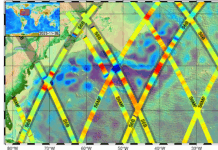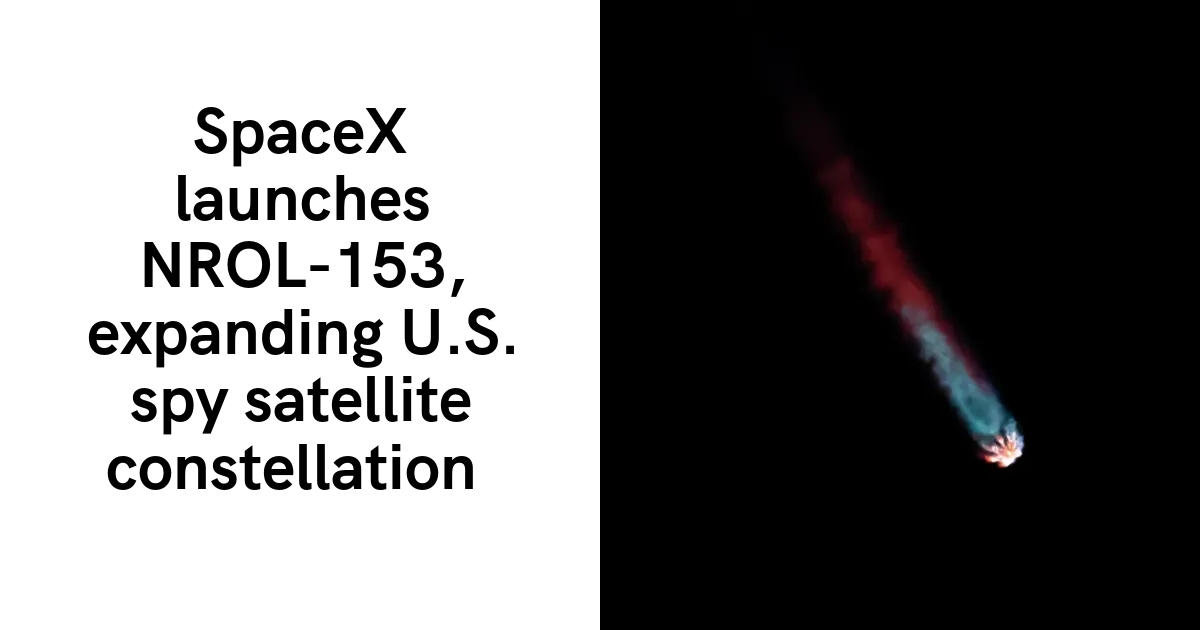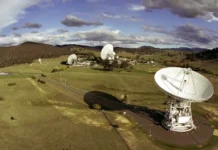In a significant boost to the United States’ intelligence and surveillance infrastructure, a SpaceX Falcon 9 rocket successfully launched the National Reconnaissance Office’s (NRO) NROL-153 mission on January 9. This mission marks a pivotal development in the NRO’s ongoing efforts to expand its low Earth orbit (LEO) satellite constellation, which plays a crucial role in national security.
The launch took place at 10:53 p.m. Eastern Time from Space Launch Complex-4 East at Vandenberg Space Force Base in California. The Falcon 9 rocket carried classified payloads that are integral to enhancing the U.S. intelligence and surveillance capabilities. This mission is particularly notable as it is the seventh launch under the NRO’s proliferated architecture strategy and the first NRO mission of 2025.
According to a statement released by the agency on January 9, the successful launch of NROL-153 builds upon the momentum of the NROL-149 mission, which took place on December 17. This launch is part of the NRO’s efforts to rapidly increase the frequency of its satellite deployments, thereby strengthening its intelligence, surveillance, and reconnaissance capabilities.
The NROL-153 mission contributes to an ever-growing network of smaller, distributed satellites. This network is designed to enhance the resilience and responsiveness of U.S. space-based intelligence systems. Over the past year, the NRO has successfully deployed nearly 100 satellites, highlighting its commitment to bolstering national security through advanced space technologies.
Looking ahead, the NRO plans to conduct approximately a dozen launches in 2025. Half of these missions will focus on its proliferated architecture. This approach represents a strategic shift away from traditional large and expensive satellites towards smaller, more numerous spacecraft. The advantages of this strategy include greater coverage, faster data delivery, and increased resilience against threats like anti-satellite weapons.
The NRO’s proliferated architecture involves collaboration with aerospace giants such as SpaceX and Northrop Grumman for the development of these advanced satellites. Although the specifics of the payloads remain classified, it is known that these satellites are equipped with sophisticated remote-sensing capabilities. These capabilities enable the satellites to provide real-time data on enemy movements and other vital intelligence, which supports U.S. military operations.
For those unfamiliar with the technical terms, a satellite constellation refers to a group of satellites working together in orbit to provide comprehensive coverage over a particular area. By deploying a constellation of smaller satellites, the NRO can achieve more detailed and timely intelligence gathering, compared to relying on a single large satellite.
The shift towards a proliferated architecture is a response to the evolving nature of space threats. Traditional large satellites are more vulnerable to anti-satellite weapons, which can disrupt or destroy them. In contrast, a network of smaller satellites can continue to function even if some are incapacitated, ensuring uninterrupted intelligence flow.
Moreover, the use of smaller satellites allows for more frequent updates and upgrades to the technology, keeping the intelligence systems agile and state-of-the-art. This agility is crucial for adapting to new challenges and threats that emerge over time.
SpaceX’s role in this mission underscores its growing importance in the field of space exploration and satellite deployment. The company’s Falcon 9 rocket has become a reliable workhorse for launching both government and commercial payloads into space. Its ability to launch missions with such precision and reliability is a testament to its advanced engineering and operational capabilities.
Northrop Grumman, on the other hand, contributes its expertise in developing sophisticated satellite technologies that meet the demanding requirements of intelligence and surveillance missions. The collaboration between these two companies and the NRO exemplifies the synergy between government agencies and private industry in advancing national security objectives.
In conclusion, the successful launch of the NROL-153 mission marks a significant milestone in the NRO’s efforts to enhance the United States’ intelligence and surveillance capabilities. By adopting a proliferated architecture, the NRO is not only improving the resilience and responsiveness of its satellite network but also ensuring that it remains at the forefront of space-based intelligence gathering. This strategy will be crucial in maintaining national security and addressing the challenges posed by evolving threats in the space domain.
As the NRO continues to launch more satellites and expand its constellation, it will be interesting to see the impact of this strategy on global intelligence and surveillance operations. For those interested in following the developments in this field, keep an eye on the latest updates from the NRO and its partners. For more information, one can refer to related articles on reputable news websites and official announcements from the NRO.
For more Information, Refer to this article.


































